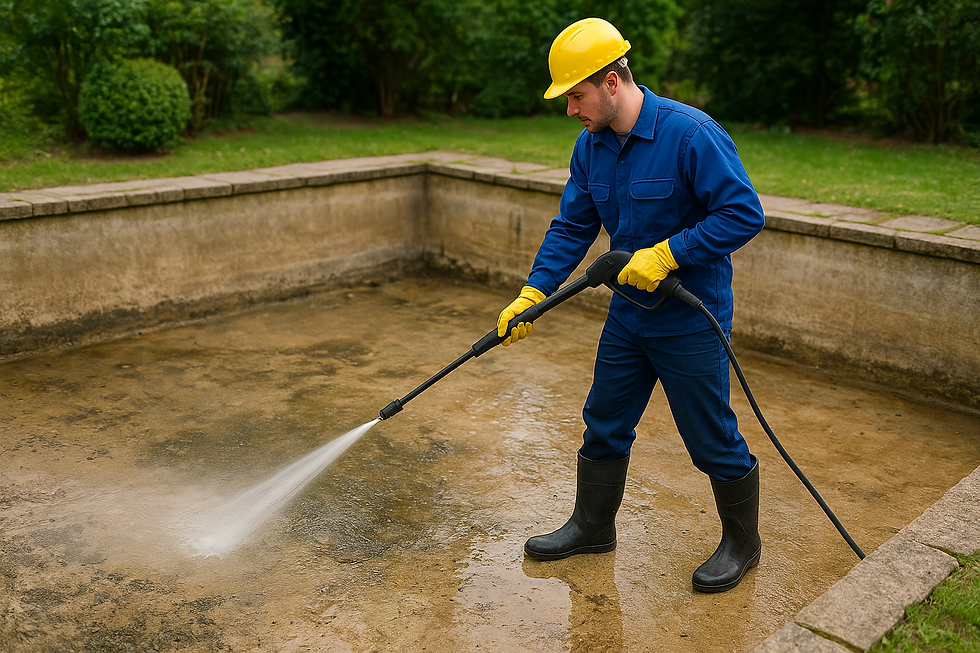Spring Start-Up for Water Features: Timing, Procedure, and Key Cautions
- Ken Wu
- Mar 1
- 3 min read
As winter fades and temperatures begin to rise, spring is the ideal time to bring your water feature back to life. Whether it’s a decorative fountain, pond, or architectural waterfall, proper spring start-up ensures reliable operation and helps prevent costly issues later in the season. A thoughtful approach not only keeps the system running smoothly but also preserves the beauty and longevity of your investment.
1. Timing: When to Start Up
In most regions of Canada and the northern U.S., water features should be started after the risk of freezing has completely passed — typically from late March to early May, depending on local climate.
Starting too early can result in freeze damage to pipes and pumps if an unexpected cold snap hits, while waiting too long can lead to stagnation, debris buildup, and algae growth in standing water.
Tip: Monitor the weather forecast for consistent nighttime temperatures above 5°C (40°F) before proceeding.
2. Step-by-Step Start-Up Procedure
A successful spring start-up is about more than just turning on the pump. It’s an opportunity to inspect, clean, and recalibrate the entire system.
Step 1: Inspect the System
Remove winter covers or insulation.
Check all visible piping, fittings, and valves for cracks or leaks caused by frost.
Examine the basin or pond for debris, sediment, or algae.
Step 2: Clean Thoroughly
Drain any standing water left from winter.
Power wash surfaces to remove dirt, biofilm, and mineral buildup.
Rinse thoroughly to prevent debris from entering the filtration system once restarted.
Step 3: Check and Service Equipment
Reinstall drain plugs and reconnect all lines that were winterized.
Inspect the pump, filter, UV system, and valves for wear or damage.
Clean or replace filters and strainers as needed.
Confirm that electrical connections are secure and dry.
Step 4: Fill and Prime the System
Refill the basin with clean water to the proper operating level.
Open air vents or bleed valves to remove trapped air while priming the pump.
Once the pump is running, observe water flow through all jets or outlets.
Step 5: Adjust Operation Settings
Slowly bring the system up to normal speed using the VFD (Variable Frequency Drive) or flow control valves.
Check for proper flow, pressure, and desired water patterns.
Set timers, sensors, and lighting schedules for seasonal operation.
3. Areas of Caution
Spring start-up is also the time to be cautious and deliberate. Small oversights can lead to major damage or inefficiencies.
Avoid running pumps dry: Always ensure the pump is fully primed before starting — dry running can damage seals and impellers within seconds.
Check for leaks early: Observe joints, valves, and fittings for any seepage when the system first pressurizes.
Do not overfill: Excess water can cause overflow or imbalance, especially in systems with surge tanks.
Watch for trapped air: Air pockets can reduce flow or cause pump cavitation — use vents or bleeder valves to purge them completely.
Confirm electrical safety: Inspect all connections, GFCI breakers, and grounding before energizing equipment.
Rebalance chemistry (for ponds): If your feature includes aquatic plants or fish, test and adjust pH and water quality before reintroduction.
4. The Benefits of a Professional Start-Up
While smaller garden fountains can often be started by owners, larger architectural or commercial systems benefit from a professional inspection and commissioning each spring. Technicians can verify system calibration, test automation controls, and ensure filtration and sanitation systems are performing optimally.
A proper spring start-up not only brings your water feature back to life but also extends the life of its mechanical system, improves water clarity, and ensures efficient, trouble-free operation throughout the season.
At Vincent Helton & Associates and Pacific Fountain Supply, we support clients across Western Canada with seasonal maintenance, system optimization, and modern upgrades for all types of architectural water features. Contact us to schedule your spring start-up inspection or to discuss system enhancements for the coming year.




Comments